Thursday 14th to Wednesday 27th April
It was 35 miles from Roseau in Dominica to the French island of Martinique and we were able to sail close hauled, with the wind from the southeast, for a couple of hours only of the 8 hour trip when the wind came up to force 4, otherwise we motored in the slight wind. Mid passage we passed another yacht that we recognised going in the opposite direction, Jeff and Eileen on Ocean Gem who we’d previously met in Antigua. We called them up on VHF and chatted for a while.
We dropped anchor at the small town of St. Pierre near to the town quay. As we were anchoring a small tatty looking yacht with a yellow hull was being towed in by the Martinique Custom’s motor launch and tied up to the quay, where customs officers and police swarmed all over it, curious bystanders hanging around. Later we asked at the restaurant we ate in that night what was going on. The restaurant was run by a French couple who’d sailed to the Caribbean years ago and stayed on, and they explained that the Caribbean was a common staging point for drugs from South America to Europe. The next morning the ‘drug runners’ yacht sailed away and the three young men aboard, South American, waved and laughed as they passed and, as they had no engine, tacked out slowly in the light breeze. Presumably no drugs were found.
St Pierre is a pretty town with the volcano Mount Pelée rising up behind and rich agricultural land on the lower slopes, it was once dubbed the ‘Little Paris of the West Indies’. In 1902 the volcano exploded releasing superheated gas and burning ash which destroyed the town, killing almost all of the population of 30,000 who had not heeded warning signs of the imminent eruption. Legend has it one person survived, a prisoner named Cyparis, incarcerated in the town gaol and protected by thick prison walls, found 4 days later by people searching for survivors.
We spent a day clearing customs, visiting the laundrette and stocking up in the supermarket, spoiled for choice by the range of French goods. By the time we’d done all this, and paddled to and fro from Vega unloading bags (our outboard having finally completely died in Dominica), we were too shattered to cook supper on board Vega as we usually do and so treated ourselves to another meal out, this time in a restaurant run by French people from Alsace. The menu had a lot of sauerkraut and sausage on it. When we returned to the town quay where we’d tied up Hunnie, our dinghy, we were upset to find that one side was deflated and the oars and water containers we’d left on board were missing. Whilst I looked along the beach to see if they’d been washed up on the shore Hugh discovered that there was a 2cm slash in the side of the dinghy. It had clearly been deliberately stabbed with a knife. By now it was late and dark, a group of local guys playing loud reggae by the side of the quay, but when I went to ask them if they’d seen anything, they were smoking and clearly high as kites. We were fortunate that a party of Italians were just leaving the restaurant and they took us back to Vega, towing our rather sorry dinghy behind.
We left the next morning early feeling rather disillusioned with St Pierre, to head for the marina at the south of Martinique, as anchoring was no longer feasible with no way to get to shore. En route we passed Diamond Rock, a 176 meter high volcanic islet off the coast. In 1804 the British landed 120 sailors on the rock who established barracks within the caves and hauled cannons to the top of the rock. The Royal Navy registered the rock as HMS Diamond Rock and harassed French vessels trying to negotiate a passage past Martinique. The island was taken by the French after they let a skiff loaded with rum drift past the rock and waited until the British sailors were inebriated.
The marina at Le Marin was large and modern with good chandleries and facilities. We also bumped into Terry and Carol, for the fourth time in the Caribbean, and shared an evening of rum punch and pizza on their boat. Carol had fractured her wrist falling whilst mending their sail cover and had it plated here in Martinique, pleased with the medical services.
We spent a few days in the marina catching up on chores and visiting chandleries looking for a new dinghy and outboard. We had hired a car, a Twingo with a sewing-machine engine, and drove to Fort de France along fast highways with road signs just like in France. The other drivers drove like the French, overtaking at speed (which wasn’t hard as our Twingo struggled to get up hills). The cyclists looked like they do in France too, determinedly racing along in bright and tight Lycra. As we approached the capital the dual carriageway was lined with out of town shopping centres, hypermarkets, furniture warehouses and fast food outlets, and at rush hour there were long traffic jams. Fort de France is a large city sprawling over the surrounding hills and we sat in a pavement café drinking the local beer, Loraine. We might have been in the South of France from the ambience and palm trees. We have noticed that the French islands of Guadeloupe and Martinique clearly both have thriving economies compared to the former British Caribbean islands that we’ve visited, and there is a good mix of races in the bars and restaurants reflecting the relative prosperity of these islands which are heavily subsidised by France.
Alex arrived by a Virgin flight to St Lucia, then changing to an inter-island Air Caraibes flight on to Martinique. It was wonderful to see him since we haven’t seen any family since he was with us in December in The Gambia, followed by Charlotte and Charlie who sailed with us to Cape Verde. He will be with us for two weeks with time to explore some of Martinique and then sail to St Lucia, where we will also be joined by Will and Willa. The next day we spent visiting a beach in the south and snorkelling, the following day driving across the island along the spectacular Route de la Trace, cut through the rainforest in the 1700s by Jesuit priests. The story goes that the twisting nature of the road is due to the Jesuits’ fondness for rum. Here we visited a domed church, the Eglise de Balata, supposedly twin of the Basilica du Sacre Coeur in Paris, then the botanical gardens, Jardin de Balata, with a treetop walkway and fabulous views. We walked part of the Trace des Jesuites, a marked trail through the rainforest and then, after a long and winding drive down through the forest, along the Canal de Beauregard, a narrow canal built by slaves along the hillside to transport water to nearby towns, plantations and rum distilleries.
The day after this we drove up to the north of the island to climb the 4,524 foot volcano, Mount Pelée. When we had arrived in Martinique a week earlier the weather had been hot and sunny, not a cloud in the sky, and the summit of Mount Pelée was clearly visible. The day we chose to do the trek it was shrouded in dense cloud. Undeterred, and even a bit relieved as it would have been gruelling to do the walk in the heat, fully exposed to the sun, we drove up to the car park and café at the base of the trail, had coffee and croissants and bought cans of orange and Lion bars to take with us. We set off at 10am and as we walked up the trail it became more steep and difficult, the steps giving way to clambering over boulders, the visibility limited to a hundred yards or less. It took about an hour and a half to the top where you could look down into the crater of the volcano far below. It wasn’t bubbling lava but lush vegetation and an extremely steep path dropping down into the crater. We took the alternative route that led around the rim of the crater, covered in a dense mat of ferns, low shrubs, mosses, pretty purple flowering plants, orchids, wild begonias. At the far side of the crater the cloud cleared briefly and tantalisingly, giving a view down over the green slopes of the volcano to the coast, St Pierre and the blue sea with miniature white boats sailing in the far distance, before being obscured again by cloud. The path climbed steeply up again to a refuge when it started to rain, then over the rim and steeply down into the crater, at times almost vertical, with loose shingle. Finally in the crater itself it felt like the Land That Time Forgot, without the dinosaurs; the track wound around tree ferns, mist adding to the atmosphere. We had to climb back out of the crater up steep steps then at the top triumphantly had our photos taken by some French hikers. Back down the same path we’d trekked up we had burgers and chips in the café at the bottom. It had taken us about 5 hours in total.
Hugh had sourced a new dinghy and outboard motor which we picked up the next day, then we left the marina to anchor by the nearby town of St Anne, with a pretty church and zigzag pathway up the hillside with shrines depicting the agonies of Christ at each turn in the path. The following day we sailed back west along the coast, passing Diamond Rock again where Alex caught a tuna fishing off the back of the boat. It was delicious, firm and sweet, simply fried for supper. We spent two nights anchoring in a bay, Grand Anse d’Arlet, where we snorkelled off the reef and Alex swam with one of the loggerhead turtles that feed off weed on the seabed. It was Hugh’s birthday so we celebrated with both lunch and supper out.
Then on south to St Lucia in the sunshine.
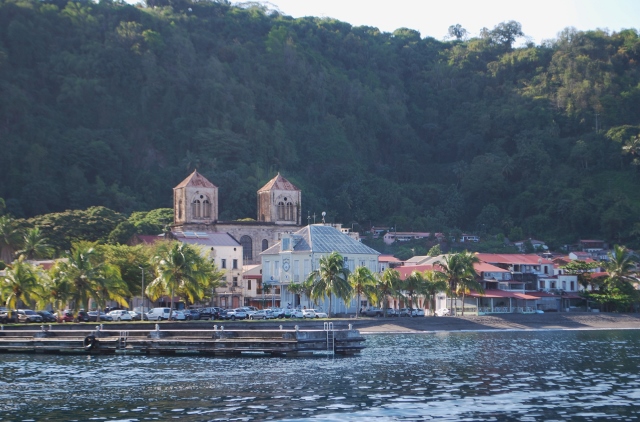
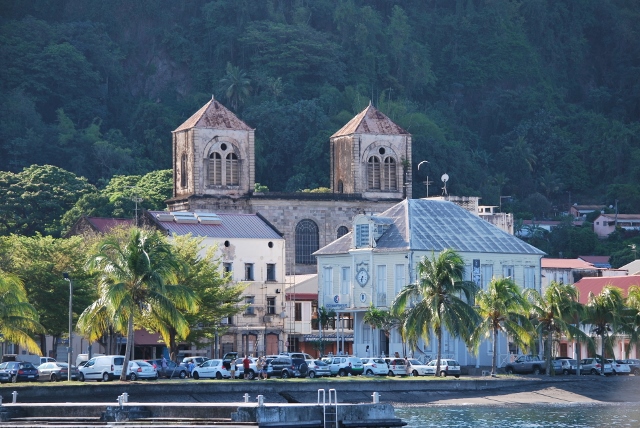
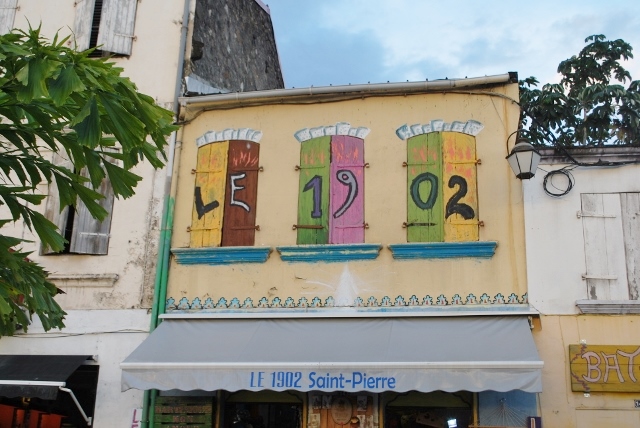
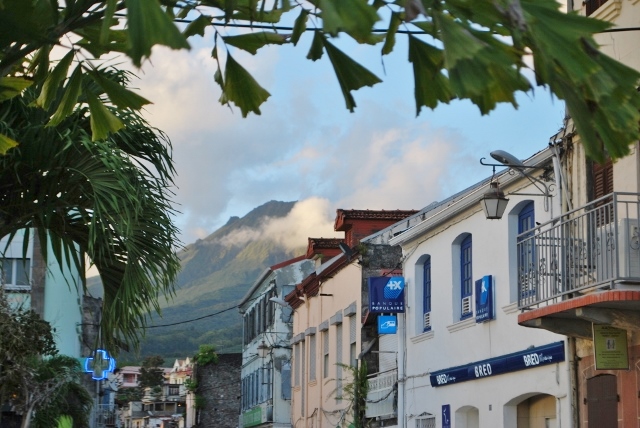
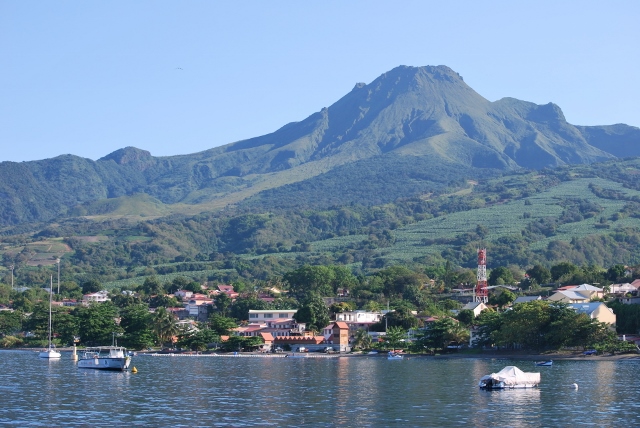
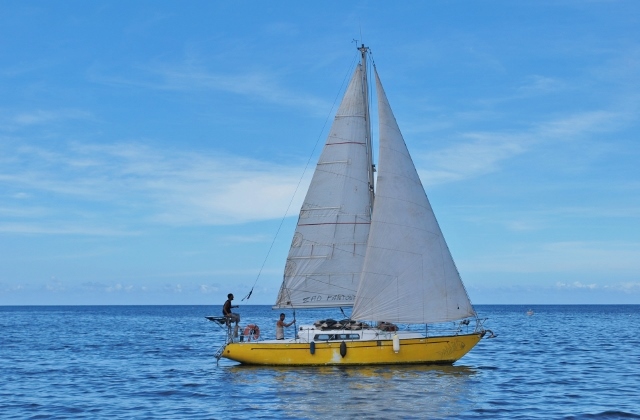
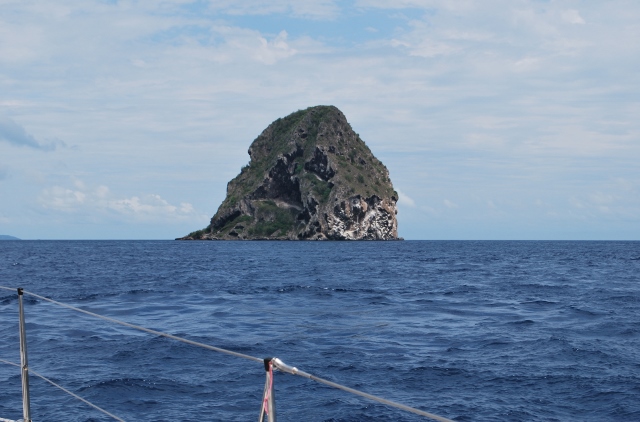
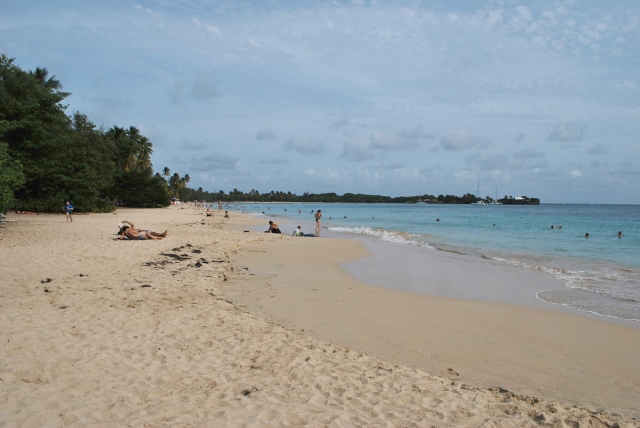
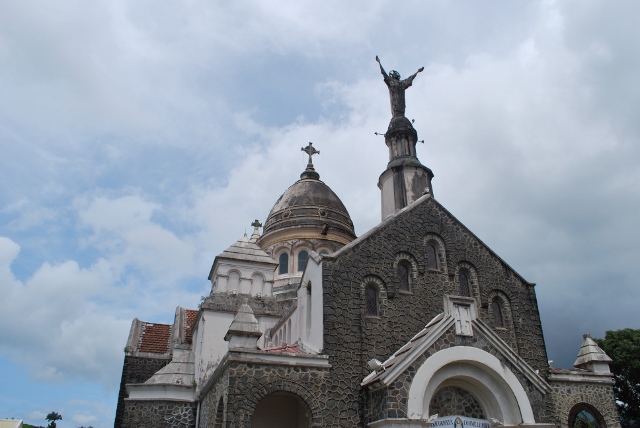
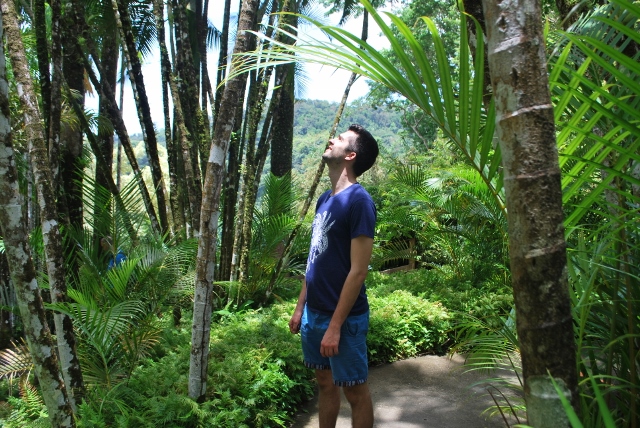
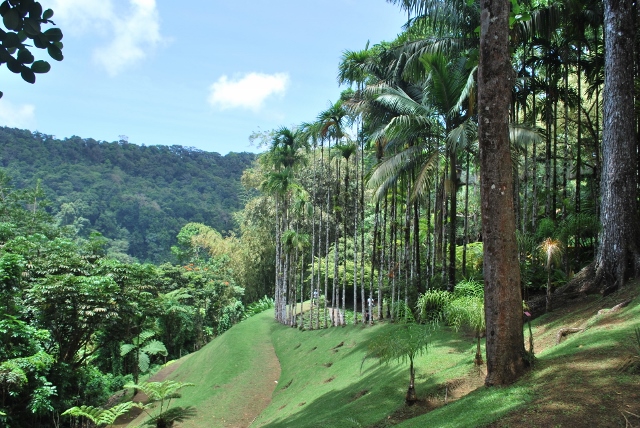
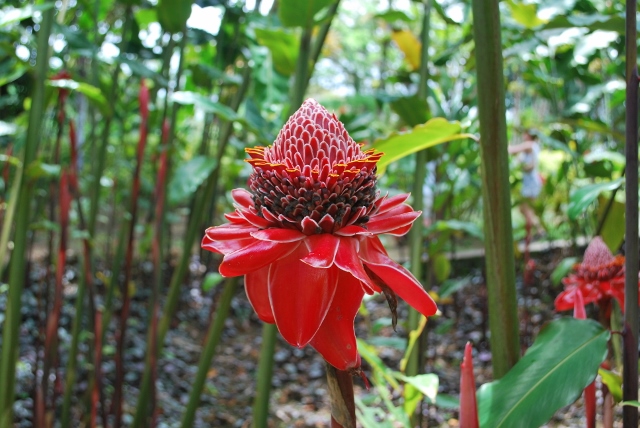
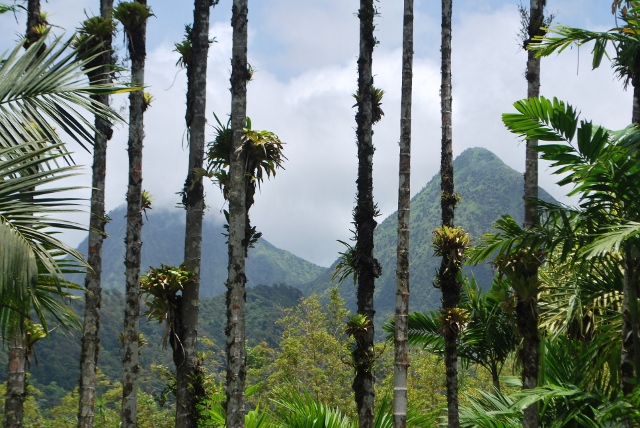
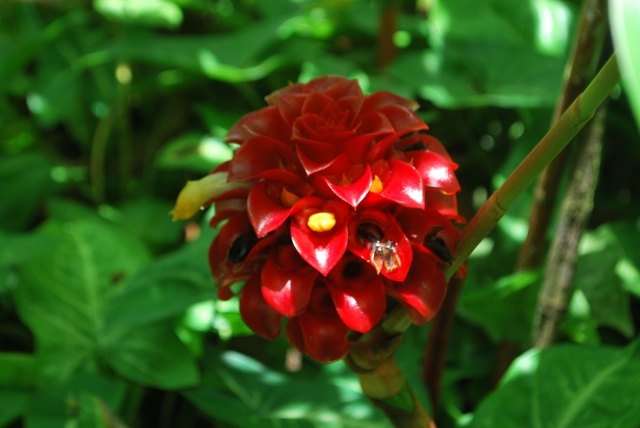
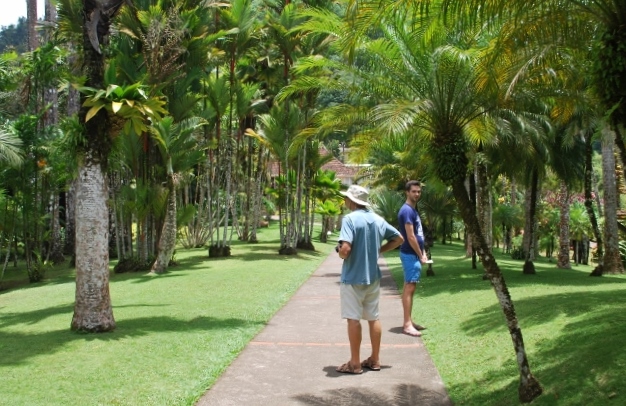
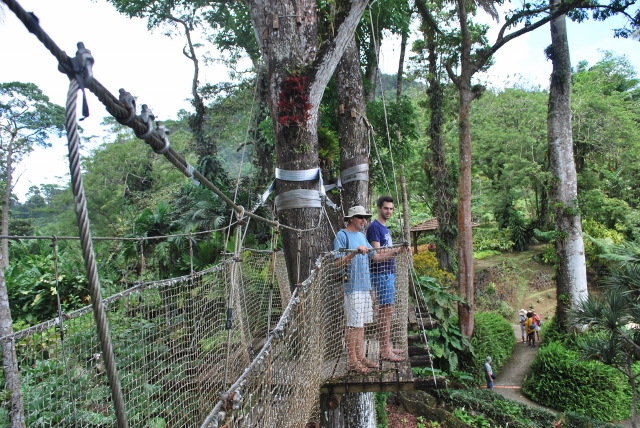
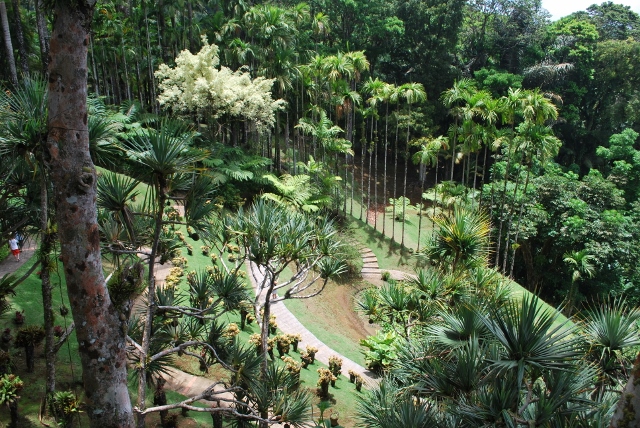
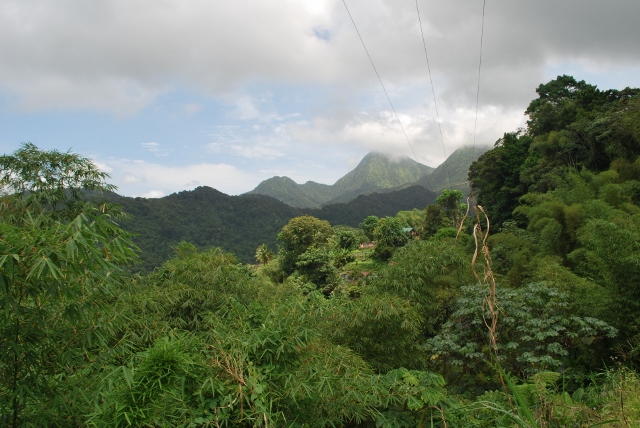
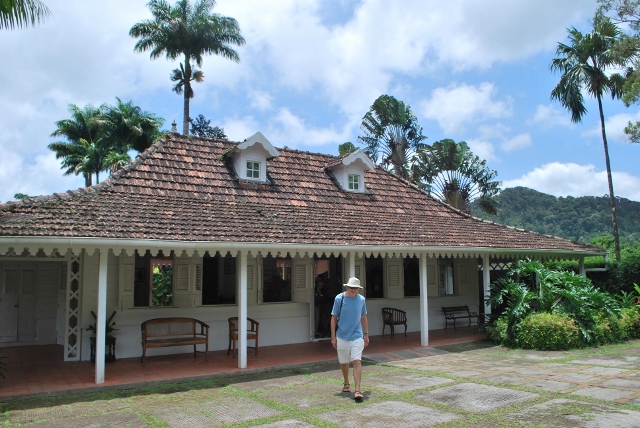
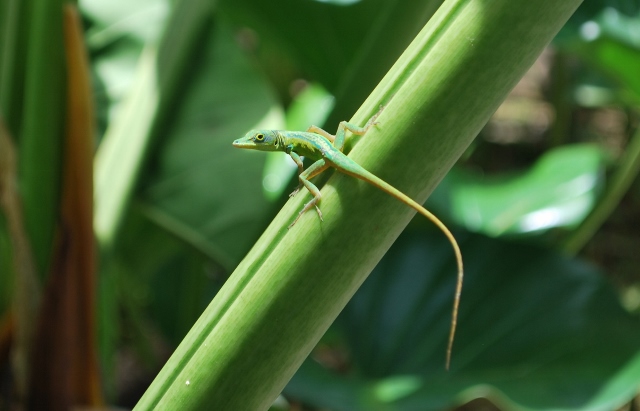
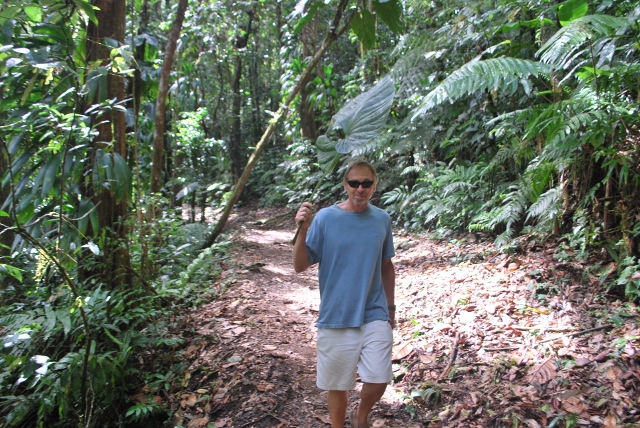
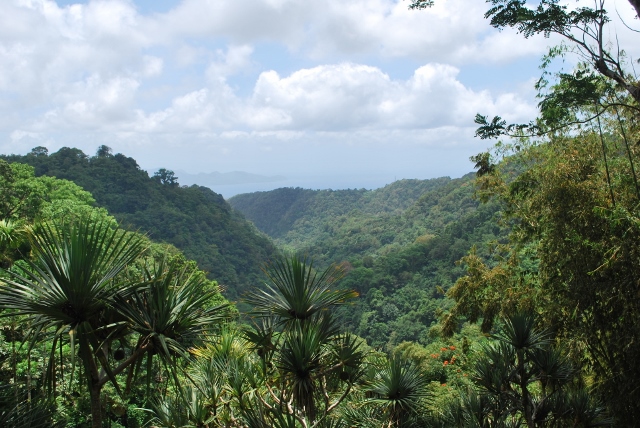
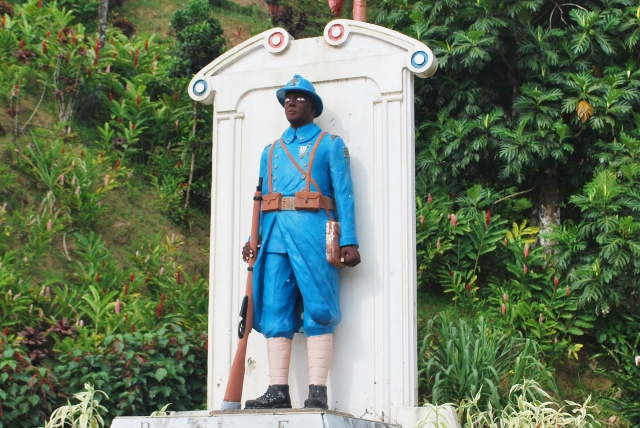
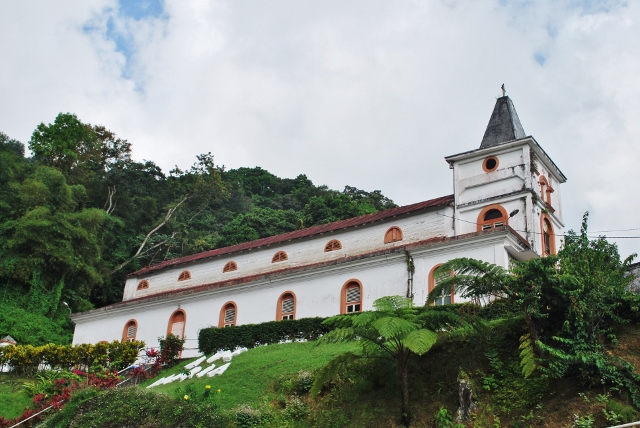
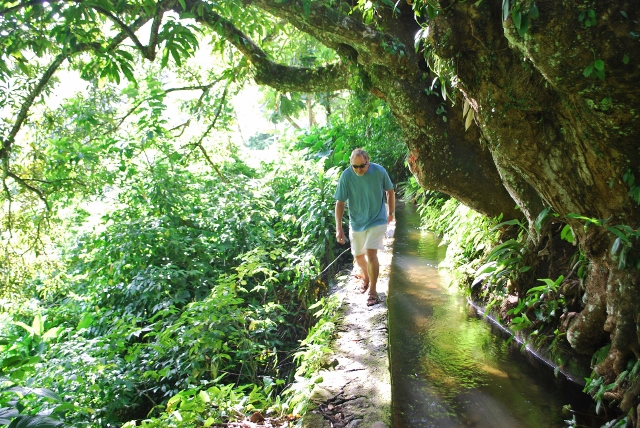
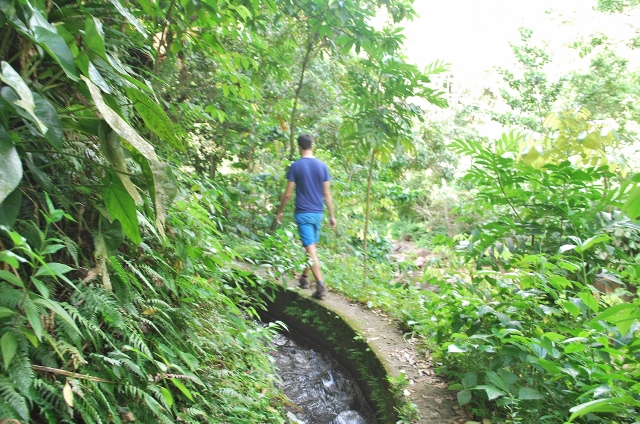
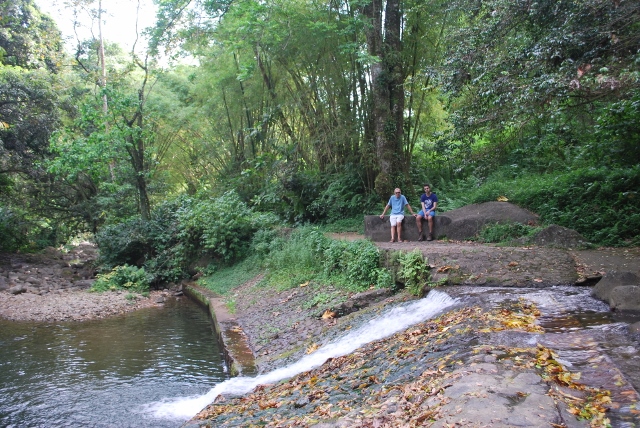
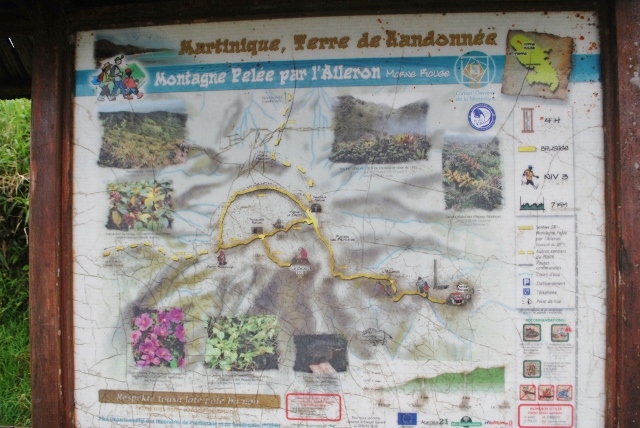
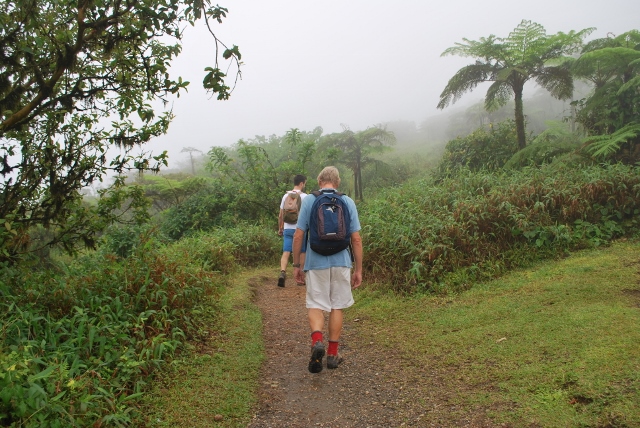
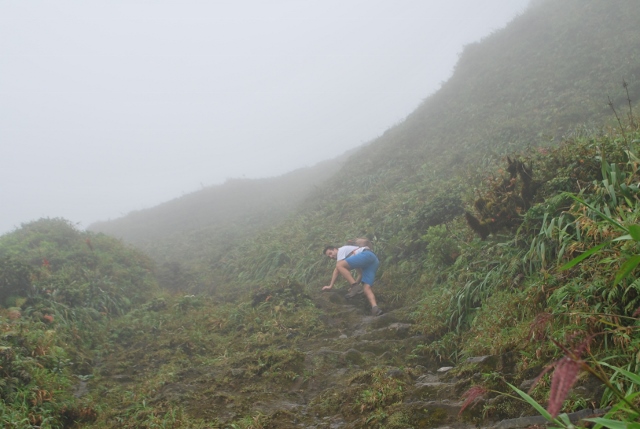
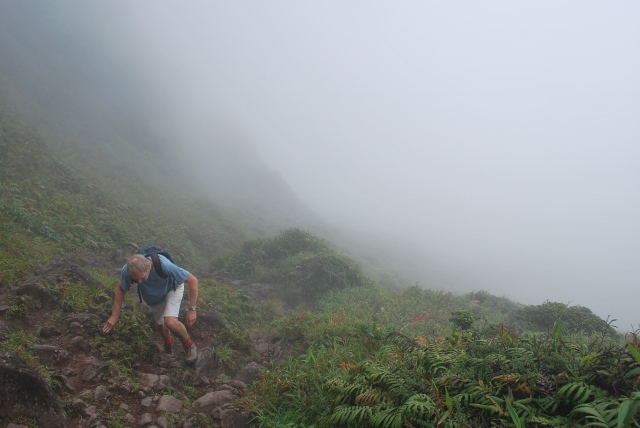
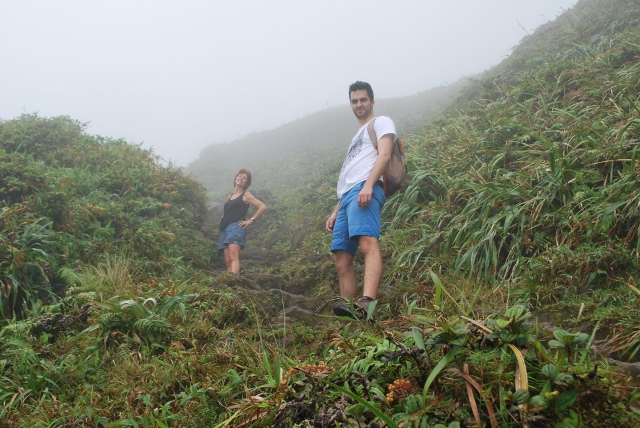
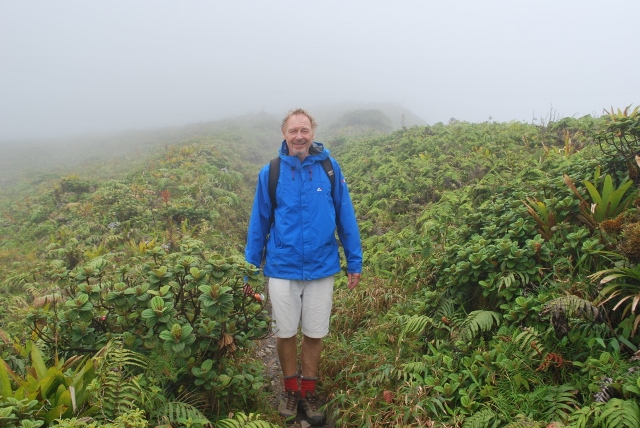
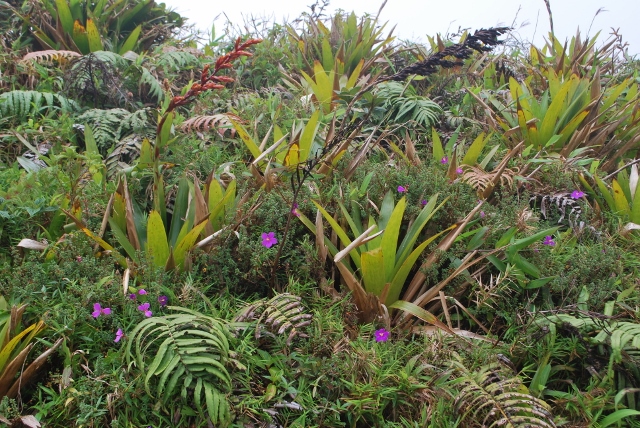
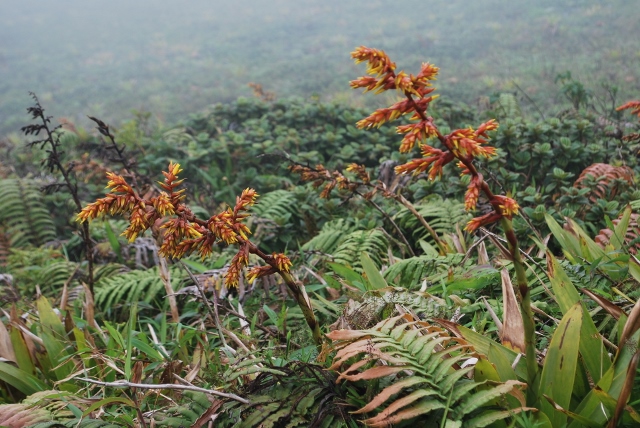
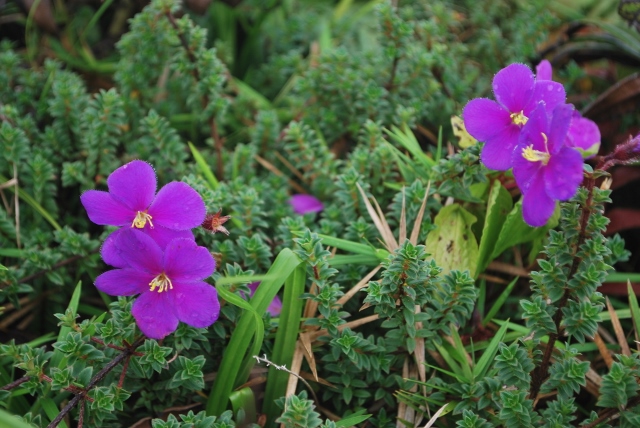
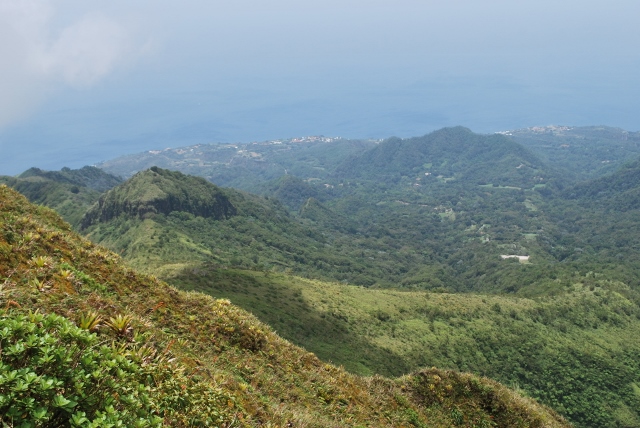
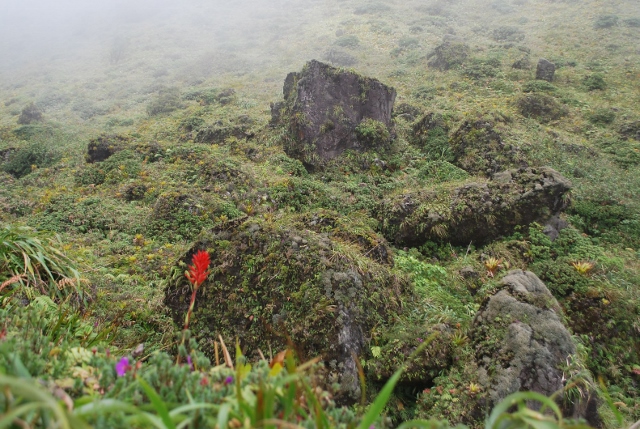
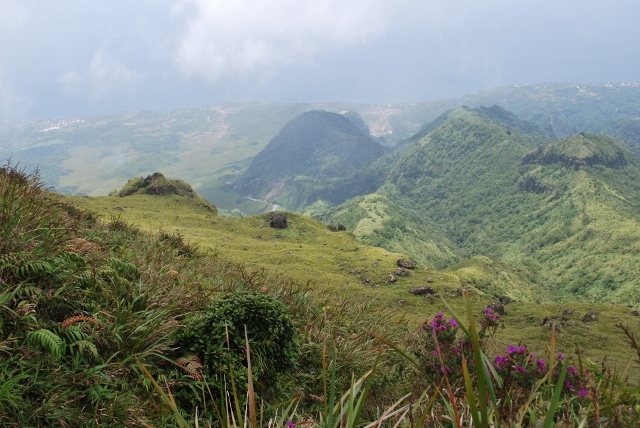
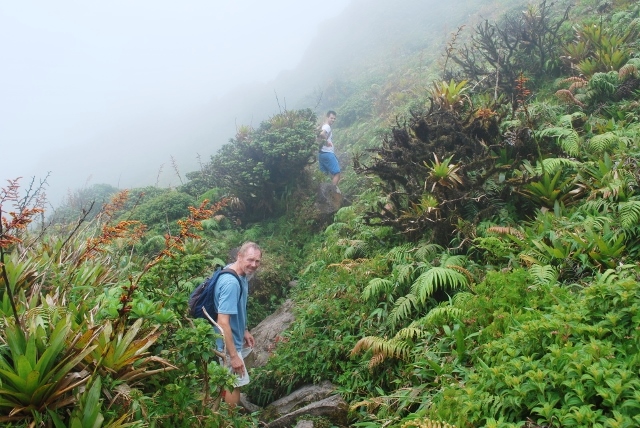
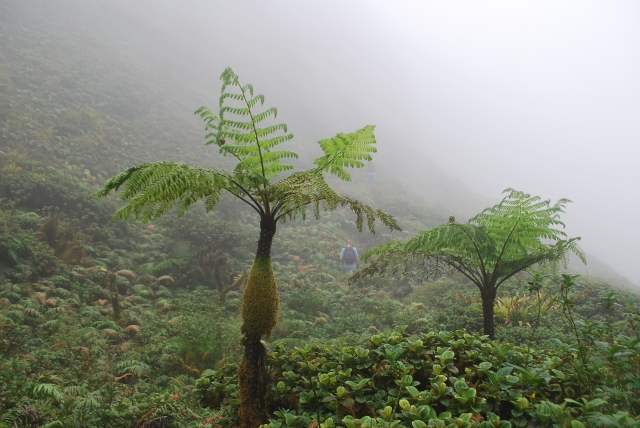
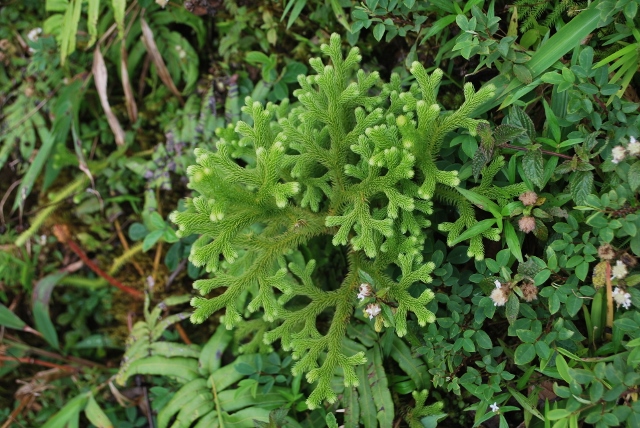
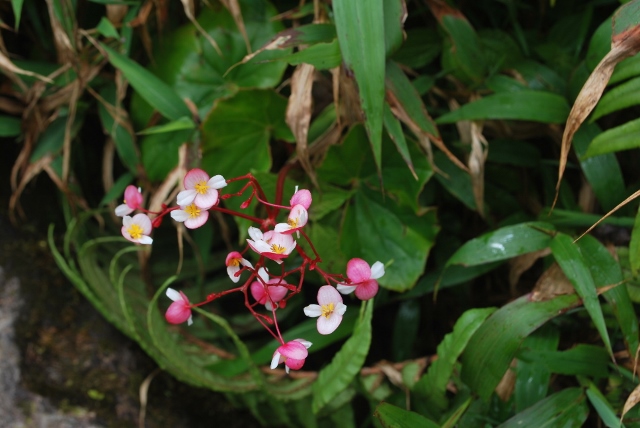
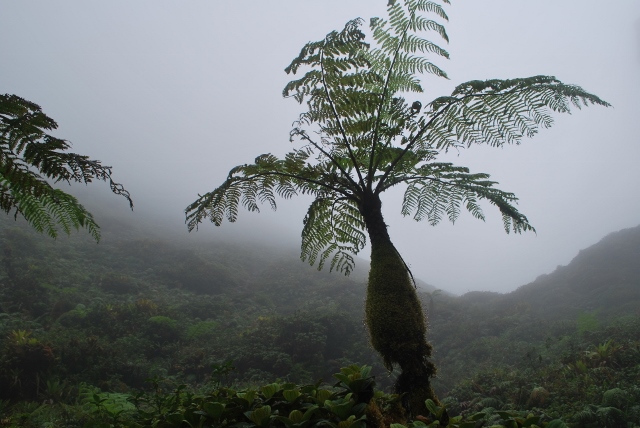
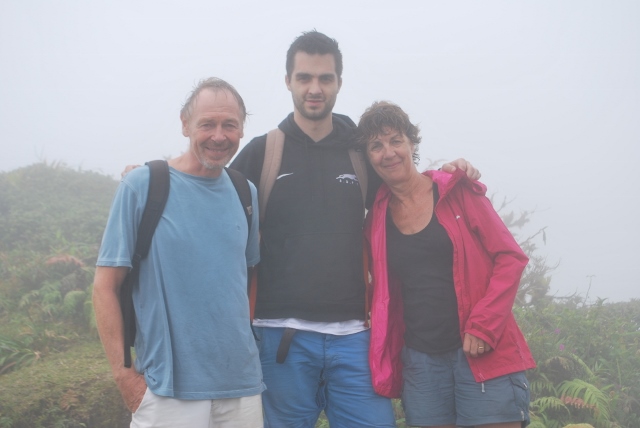
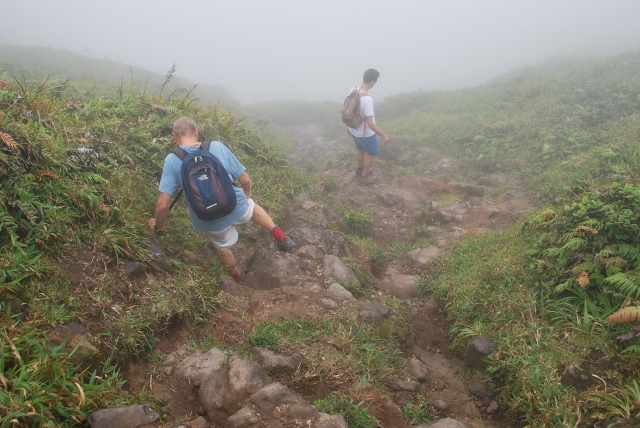
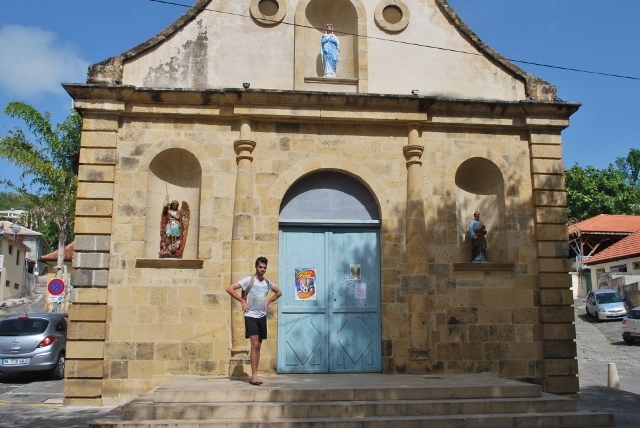
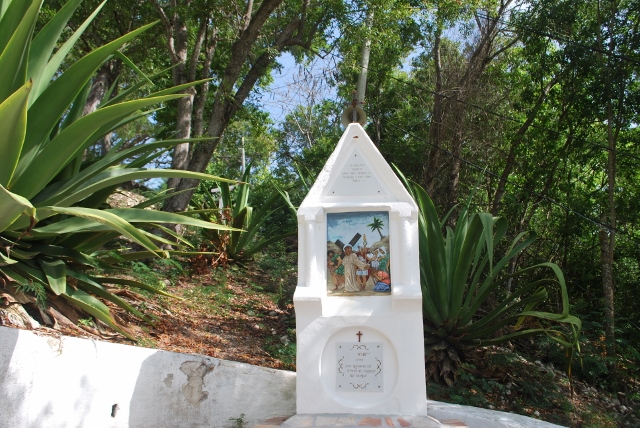
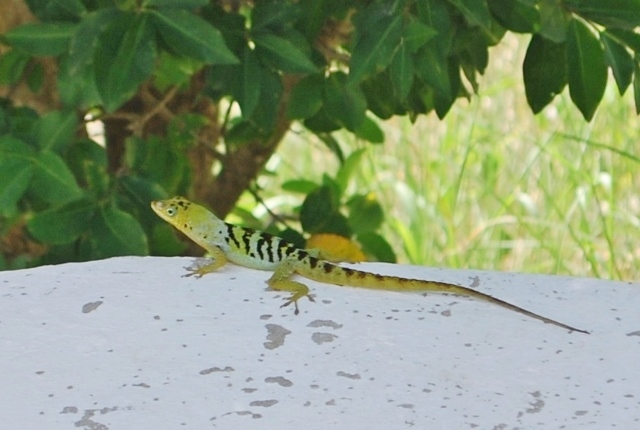
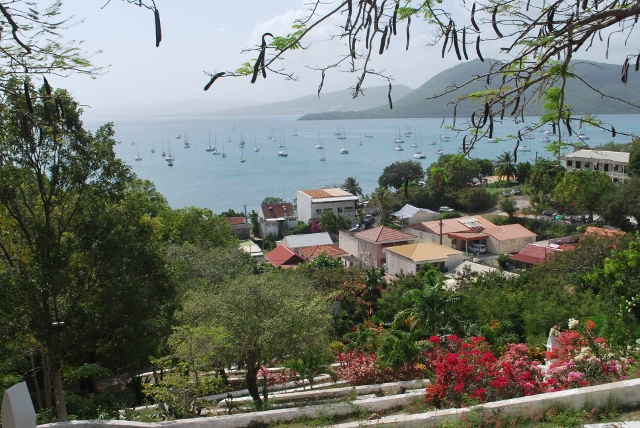
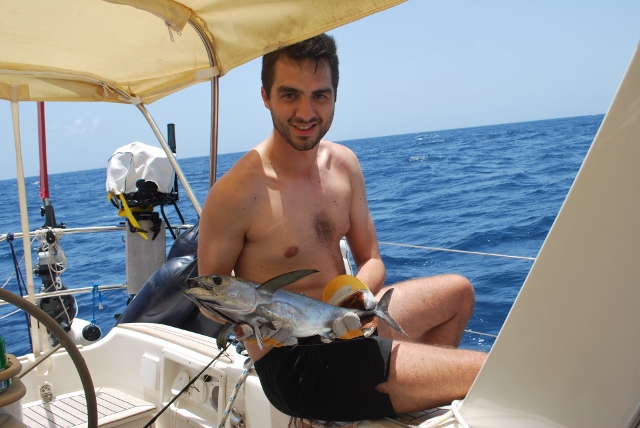
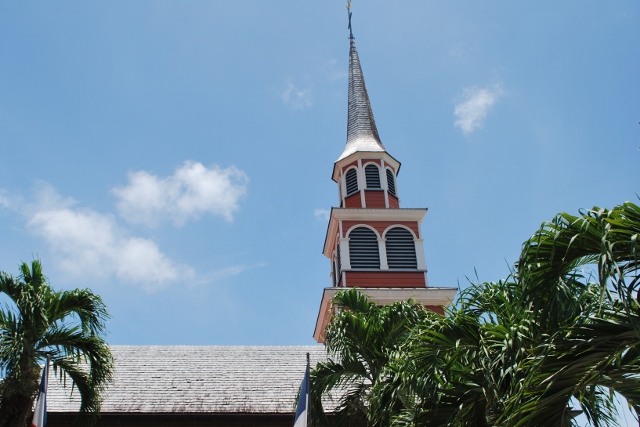
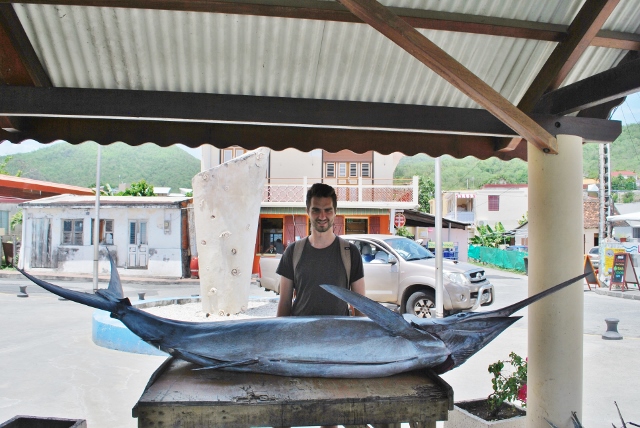
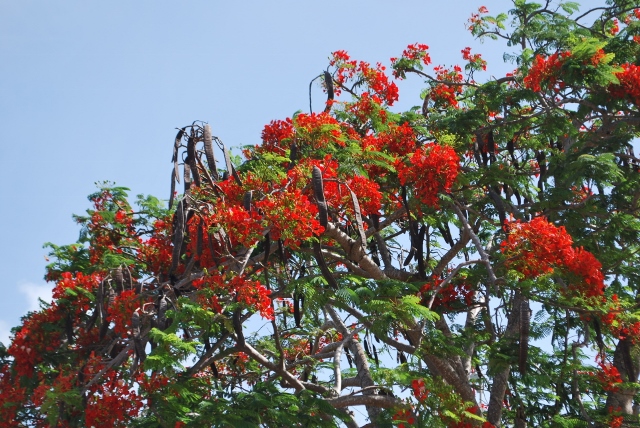
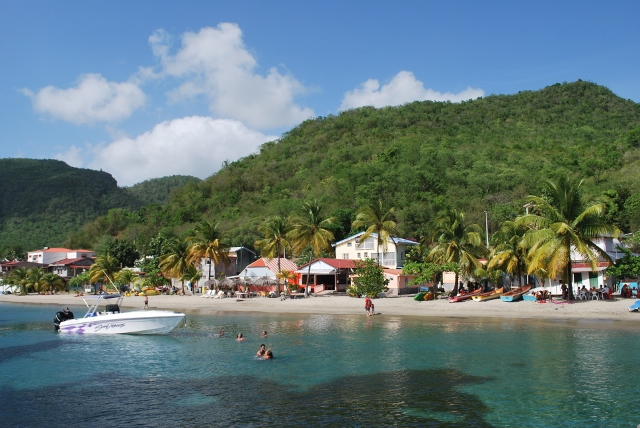
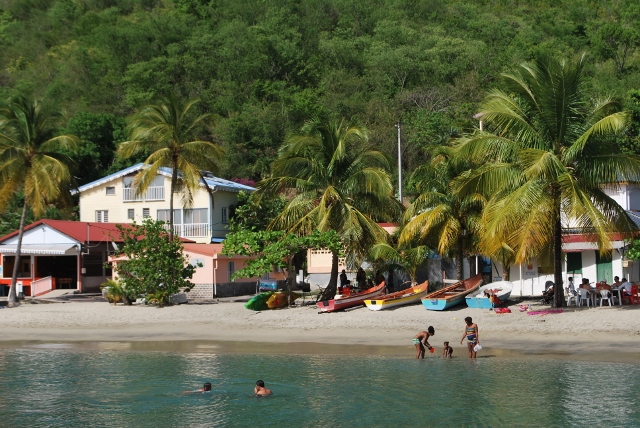
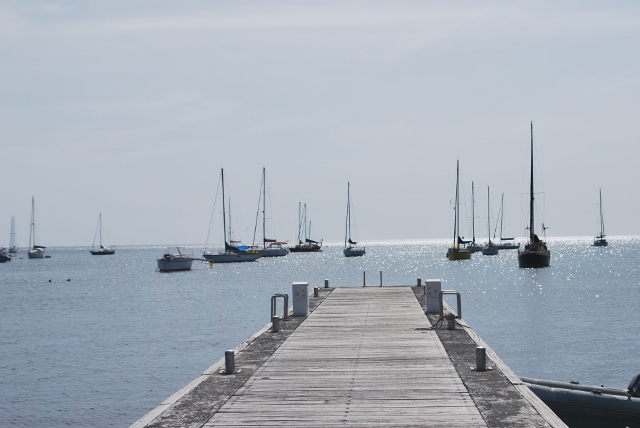

8 Comments
Karen Rochester
May 13, 2016 - 6:34 amGreat reading of your exploits Annie. Sorry re Hunny…but another naming opportunity at least ? Enjoy the rest of your time with Alex. Look forward to the next instalment. Sending love xx
annie
May 14, 2016 - 4:03 pmThanks so much Karen. It has been great having visitors but all gone now.. so I must get up to date on the blogs. Hope to get together soon. Lots of love xx
Peter Baylis
May 13, 2016 - 5:50 pmAnother classic Annie. Many thanks. Surprised to read that your dinghy was stabbed to death. Most unfortunate.
annie
May 14, 2016 - 4:00 pmThanks Pete. So glad you’re enjoying the blog. Upsetting about the dinghy, but a bit like the vandals who bash in car mirrors in Bristol on a Saturday night. Hugh is thrilled with the new dinghy xx
Jim Lucas
May 15, 2016 - 11:20 pmAnnie,
Great post as usual – see you are now in Bequia – haven’t seen it before but have to say its probably the best flag in the world!!
annie
May 16, 2016 - 5:01 pmthanks Jim. For those who haven’t seen the Bequia flag I’ll copy it to the end of my post on Bequia… When I get round to it ? xx
cheryl
May 25, 2016 - 7:34 pmjust catching up . i love rainforest so it made me very jealous .Loved all the pictures esp the rose and the lizards
annie
May 26, 2016 - 4:40 pmThanks Cheryl. The birds, plants, fish, turtles etc here are wonderful xx